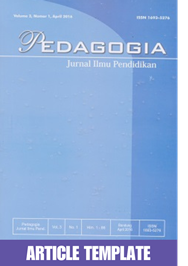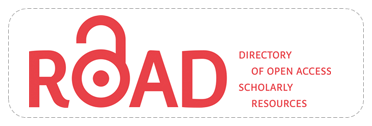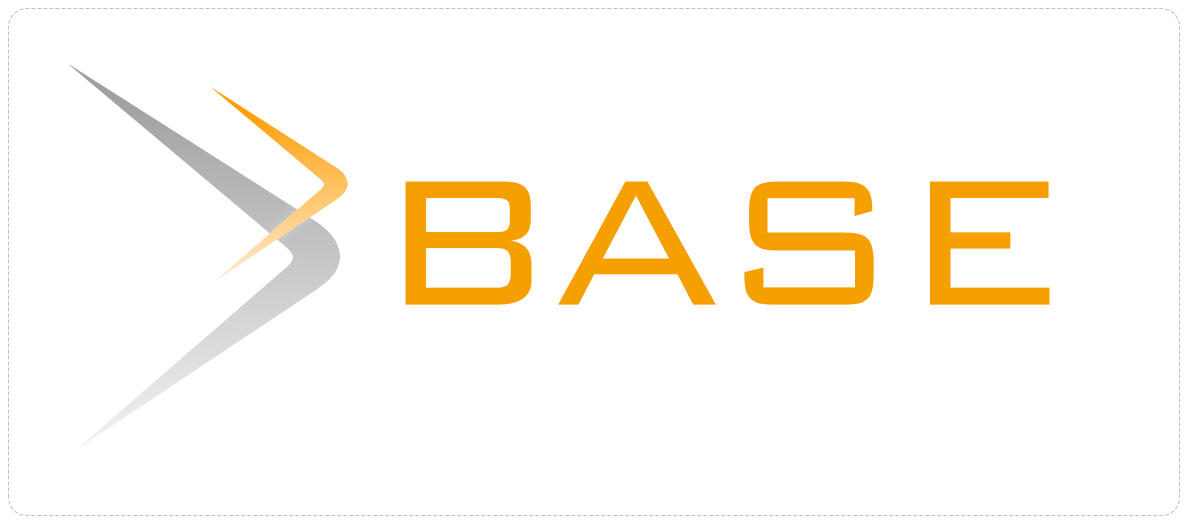ANALISIS ADVERSITY QUOTIENT (AQ) TERHADAP MOTIVASI BELAJAR SISWA DALAM PEMBELAJARAN DARING
Abstract
Abstrak
Besarnya dampak wabah Covid-19 pada lingkup pendidikan mendorong dilakukannya perubahan dalam proses pembelajaran untuk dapat memutus rantai penyebaran Covid-19 dengan menerapkan kegiatan pembelajaran secara online untuk seluruh jenjang pendidikan. Sangat mungkin bagi siswa menemukan kesulitan-kesulitan selama pembelajaran daring dan membuat motivasi belajar siswa menurun. Maka untuk menghadapi kesulitan tersebut diperlukan kecerdasan yang mampu membantu siswa tetap bertahan atau disebut dengan Adversity Quotient (AQ) yang pada akhirnya dapat meningkatkan motivasi belajar siswa. Tujuan dari penelitian ini untuk menganalisis Adversity Quotient dan mengetahui pengaruhnya terhadap motivasi belajar. Pendekatan penelitian ini dilakukan dengan penelitian kuantitatif, ada 108 responden penelitian berdasarkan teknik cluster random sampling. Adapun pengambilan data penelitian ini menggunakan kuesioner skala likert 5 point, lalu dianalisis dengan teknik analisis regresi linier sederhana. Hasil dari penelitian ini bahwa Adversity Quotient ditinjau dari aspek control, origin and ownership, reach, dan endurance berada di kategori cukup baik. Terdapat pengaruh Adversity Quotient dan motivasi belajar siswa secara positif dan signifikan dengan kontribusi pengaruh berada pada kategori tinggi.
Abstract
The magnitude of the Covid-19 impacts outbreak on the scope of education encourages changes in the learning process to be able to break the chain of spread of Covid-19 by applying online learning activities for all levels of education. It is quite possible for students to find difficulties during online learning and make students' learning motivation decrease. So, to deal with these difficulties, intelligence is needed that can help students stay afloat or called Adversity Quotient (AQ) which can ultimately increase students' learning motivation. The purpose of this study was to analyze the Adversity Quotient and find out its effect on learning motivation. This research approach was carried out with quantitative research, there were 108 respondents based on cluster random sampling techniques. As for the data collection of this study using a 5-point likert scale questionnaire, it is then analyzed with a simple linear regression analysis technique. The results of this study that Adversity Quotient reviewed from the aspects of control, origin and ownership, reach, and endurance are in the category quite well. There is the influence of Adversity Quotient and student learning motivation positively and significantly with the contribution of influence to be in the high category.
Keywords
Full Text:
PDF (Bahasa Indonesia)References
Agusta, Y. (2014). Hubungan antara Orientasi Masa Depan dan Daya Juang terhadap Kesiapan Kerja pada Mahasiswa Tingkat Akhir Fakultas Ilmu Sosial dan Ilmu Politik di Universitas Mulawarman. Psikoborneo, 51(1), 51.
Aisyatinnaba, N., & Sutoyo, A. (2016). Peran Orang Tua dalam Memotivasi Belajar Siswa. Ijgc, 5(4), 52–57.
Alyani, F., & Zahra, R. (2020). Penerapan Rasch Model: Analisis Adversity Quotient Siswa dalam Matematika. Math Didactic: Jurnal Pendidikan Matematika, 6(2), 226–234.
Arifa, F. N. (2020). Tantangan Pelaksanaan Kebijakan Belajar dari Rumah dalam Masa Darurat Covid-19. Info Singkat: Kajian Singkat Terhadap Isu Aktual Dan Strategis, 7(1), 13–18.
Asni, A., Salsa Nabilah, S., Fajri, N., Chairunnisa, D., & Muhammadiyah Hamka, U. (2021). Adversity Quotient of Students During Covid-19 Outbreak. JPPI, 7(1), 72–77.
Cahyani, A., Listiana, I. D., & Larasati, S. P. D. (2020). Motivasi Belajar Siswa SMA pada Pembelajaran Daring di Masa Pandemi Covid-19. IQ (Ilmu Al-Qur’an): Jurnal Pendidikan Islam, 3(01), 123–140.
Creswell, J. W. (2014). Research Design : Qualitative, Quantitative, and Mixed Methods Approaches. SAGE Publications.
Devakumar, M. (2012). A Study of Adversity Quotient of Secondary School Students in Relation to Their Academic Self-Concept and Achievement Motivation. University of Mumbai.
Emda, A. (2017). Kedudukan Motivasi Belajar Siswa dalam Pembelajaran. Lantanida Journal, 5(2), 93–196.
Gustiani, S. (2020). Students ’ Motivation in Online Learning During Covid-19 Pandemic Era : a Case Study. Holistics Journal, 12(2), 23–40.
Hanesty, E., Neviyarni, N., & Karneli, Y. (2020). Factors Affecting Student Learning Motivation During The Covid-19 Pandemic. International Journal of Applied Counseling and Social Sciences, 02(1), 100–107.
Hartosujono, H. (2017). Perilaku Adversity Quotient Mahasiswa Ditinjau Dari Locus of Control. SOSIOHUMANIORA: Jurnal Ilmiah Ilmu Sosial Dan Humaniora, 1(1).
Hidayati, I. A., & Taufik, T. (2020). Adversity quotient of outstanding students with limited conditions. Indigenous: Jurnal Ilmiah Psikologi, 5(2), 195–206.
Indriyanti, R. D., Nurfadhillah, S., & Awiria, A. (2020). Hubungan Peran Orang Tua Dengan Motivasi Belajar Siswa Kelas V SDN Kalideres 04 Petang. Jurnal Pendidikan Dan Ilmu Sosial, 2(3).
Kurniawan, J. (2013). Pengaruh Adversity Quotient (AQ) dan Motivasi Belajar Siswa di SMAN 09 Pontianak. Khatulistiwa, 6(3).
Noor, T. R. (2020). Mengembangkan Jiwa Keagamaan Anak (Perspektif Pendidikan Islam dan Perkembangan Anak Usia Dini). Kuttab, 4(2).
Novita, Y., Salmiah, S., & Savaroza, A. I. (2021). Pengaruh Adversity Quotient terhadap Motivasi Belajar Siswa pada Mata Pelajaran Ekonomi di Sekolah Menengah Atas Negeri 2 Siak Hulu. Perspektif, XII(1), 10–14.
Puspitasari, A., & Noor, T. R. (2020). Optimalisasi Manajemen Pembelajaran Daring dalam Meningkatkan Adversity Quotient (AQ) Siswa Selama Pandemi Covid-19. Jurnal Elkatarie, 3(2), 439–458.
Rahmalina, R., Tririzky, R., & Fitri, A. (2020). Adversity Quotient Mahasiswa Praktek Lapangan Kependidikan (PLK) Prodi Pendidikan Bahasa Jepang UNP dalam Menghadapi Pandemi Covid-19 Tahun 2020. Lingua Didaktika, 14(2), 132–144.
Sardiman, A. M. (2012). Interaksi dan Motivasi Belajar Mengajar. Raja Grafindo Persada.
Sari, A. F. (2021). Pengaruh Kompetensi Guru terhadap Motivasi Belajar Siswa pada SMK di Wilayah Serang Banten. Jurnal Ekonomi Efektif, 3(4), 495–501.
Shen, C. (2014). A Study Investigating the Influence of Demographic Variables on Adversity Quotient. The Journal of Human Resource and Adult Learning, 10(1), 22–32.
Soniatri, L., & Syukur, Y. (2019). Adversity Quotient Arranging Thesis for Students of Faculty of Education State University of Padang. Jurnal Neo Konseling, 1(4), 1–7.
Suarsi, P. D. K., & Wibawa, I. M. C. (2021). The Impact of the COVID-19 Pandemic on Student Learning Motivation. Jurnal Ilmiah Sekolah Dasar, 5(2), 194.
Suryadi, Triyono, Nur, A., & Dianto, M. (2020). Hubungan Penyesuaian Diri Dan Motivasi Belajar Dengan Prestasi Belajar Siswa. Jurnal Neo Konseling, 2(1), 1–9.
Susilo, A., Rumende, C. M., Pitoyo, C. W., Santoso, W. D., Yulianti, M., Herikurniawan, H., Sinto, R., Singh, G., Nainggolan, L., Nelwan, E. J., Chen, L. K., Widhani, A., Wijaya, E., Wicaksana, B., Maksum, M., Annisa, F., Jasirwan, C. O. M., & Yunihastuti, E. (2020). Coronavirus Disease 2019: Tinjauan Literatur Terkini. Jurnal Penyakit Dalam Indonesia, 7(1), 45.
Utami, S., Nashori, F., & Rachmawati, M. A. (2014). Pengaruh Pelatihan Adversity Quotient Untuk Meningkatkan Motivasi Belajar Siswa Sekolah Menengah Pertama. Jurnal Intervensi Psikologi (JIP), 6(1), 131–149.
Williams, J. M., & Bryan, J. (2013). Overcoming Adversity: High-Achieving African American Youth’s Perspectives on Educational Resilience. Journal of Counseling and Development, 91(3), 291–300.
Yuliana, Y. (2020). Corona virus diseases (Covid-19): Sebuah tinjauan literatur. Wellness And Healthy Magazine, 2(1), 187–192.
DOI: https://doi.org/10.17509/pdgia.v19i3.40800
Refbacks
- There are currently no refbacks.
INDEXED BY

This work is licensed under a Creative Commons Attribution-ShareAlike 4.0 International License















